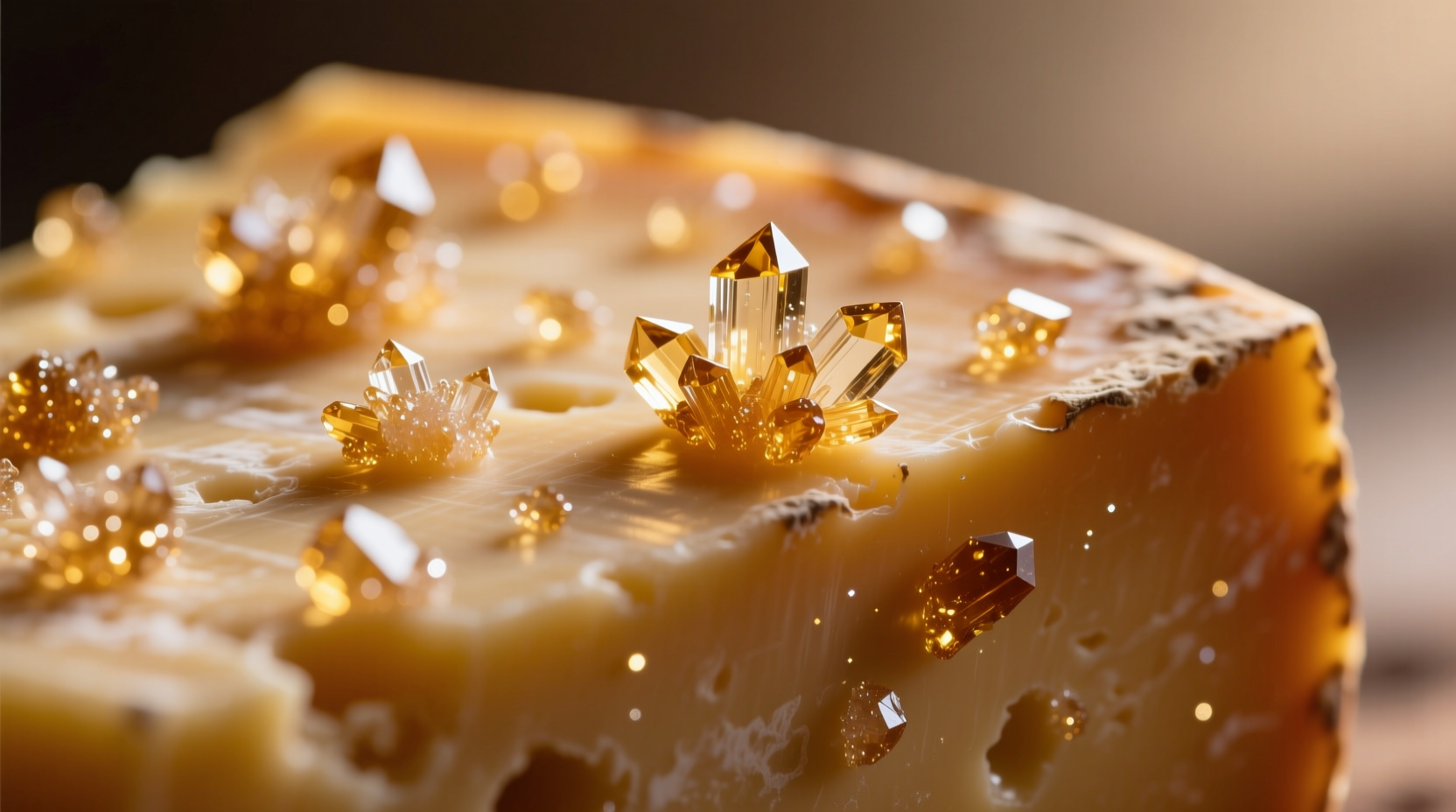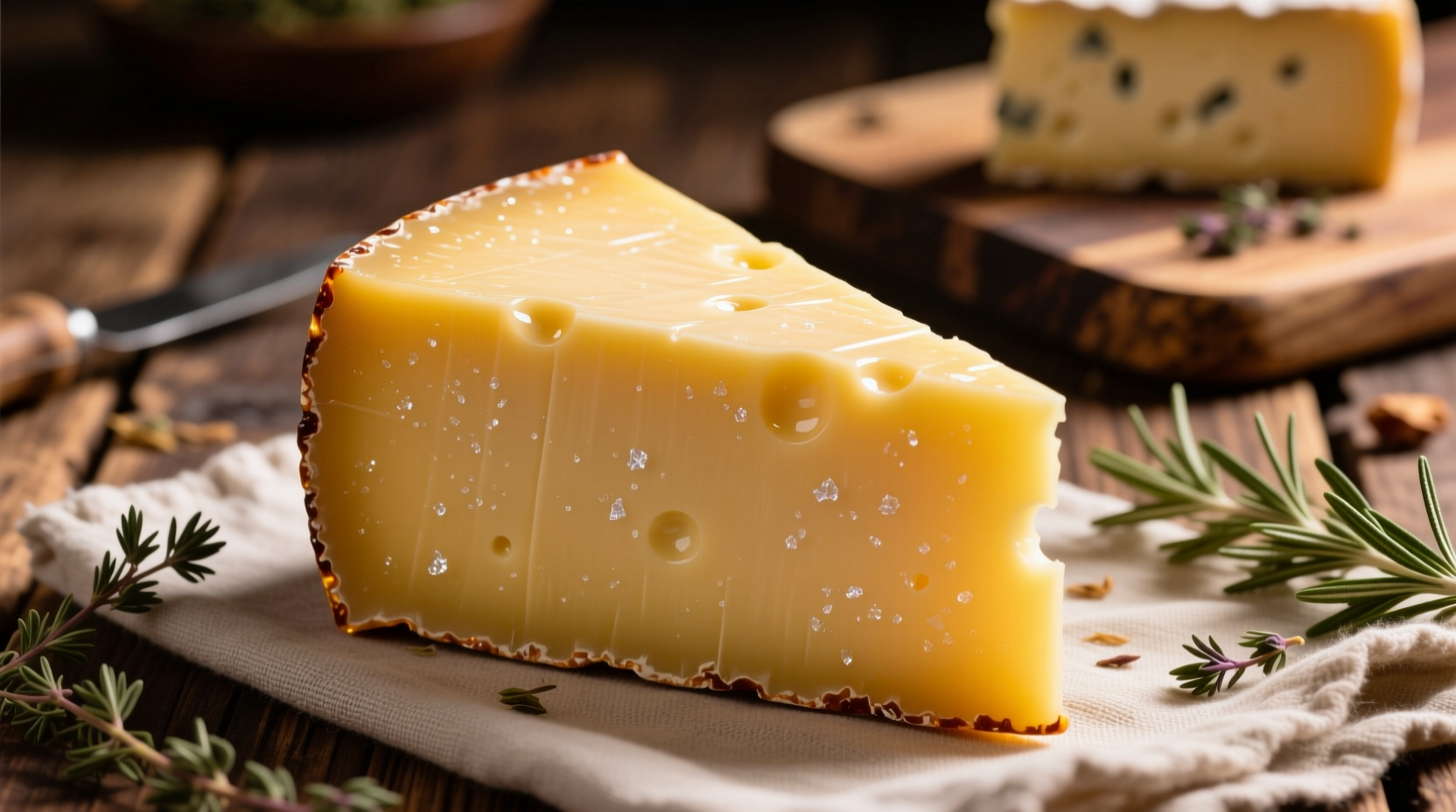The Gouda Flavor Evolution: From Mild to Magnificent
When you bite into a slice of Gouda, you're experiencing centuries of Dutch cheesemaking tradition. This beloved cheese transforms completely as it ages, creating distinct flavor experiences that appeal to different palates. Understanding these variations helps you select the perfect Gouda for your taste preferences or culinary needs.
Young Gouda: The Approachable Starter Cheese
Fresh Gouda (Jong) aged 1-6 months offers the gentlest introduction to this cheese family. Its smooth, springy texture yields to a mild flavor profile featuring:
- Creamy dairy notes similar to mild cheddar
- Subtle sweetness reminiscent of fresh milk
- Faint buttery undertones
- Minimal saltiness that makes it ideal for children
This versatile cheese melts beautifully, making it perfect for sandwiches, grilled cheese, and cheese sauces. Food scientists at Wageningen University have documented how the lower concentration of free fatty acids in young Gouda creates this milder profile compared to aged varieties.
Medium-Aged Gouda: The Flavor Transition
As Gouda matures between 7-12 months (Jong Belegen), it enters its transitional phase where complex flavors begin to emerge. You'll notice:
- Developing nuttiness, particularly walnut and hazelnut notes
- Emerging caramel undertones
- Slightly firmer, more elastic texture
- Increased salt concentration as moisture evaporates
This "middle ground" Gouda works well for both cooking and cheese boards, offering more character than young Gouda while remaining approachable for those new to stronger cheeses.
| Aging Period | Flavor Profile | Texture Characteristics | Best Uses |
|---|---|---|---|
| 1-6 months (Jong) | Mild, creamy, subtly sweet | Smooth, springy, elastic | Sandwiches, melting applications |
| 7-12 months (Jong Belegen) | Nutty, developing caramel notes | Firmer, more elastic | Cheese boards, cooking |
| 12-18 months (Belegen) | Pronounced caramel, butterscotch | Semi-firm, beginning crystallization | Charcuterie, wine pairing |
| 18-24 months (Extra Belegen) | Intense nutty, crystalline sweetness | Firm, noticeable tyrosine crystals | Specialty cheese boards |
| 24+ months (Oud or Overjarig) | Deep umami, complex crystalline structure | Hard, abundant crunchy crystals | Special occasions, slow savoring |
Aged Gouda: The Flavor Powerhouse
True Gouda enthusiasts often seek out aged varieties (Belegen, Extra Belegen, or Oud), where the magic really happens. As cheese ages beyond 12 months, enzymatic reactions create remarkable transformations:

The Dutch Cheese Association documents how traditional Gouda develops tyrosine crystals—tiny, crunchy formations that aren't salt but amino acid clusters created during prolonged aging. These crystals deliver intense flavor bursts that define premium aged Gouda.
The Science Behind Gouda's Flavor Transformation
Understanding what does Gouda taste like requires examining the biochemical changes during aging. According to research published in the Journal of Dairy Science, three key processes create Gouda's evolving flavor profile:
- Proteolysis: Breakdown of proteins into free amino acids that create savory umami notes
- Lipolysis: Fat breakdown producing fatty acids that contribute to sharp, tangy flavors
- Maillard reactions: Non-enzymatic browning creating complex caramelized flavors
These processes accelerate as Gouda ages, explaining why two-year-old Gouda tastes dramatically different from its younger counterpart. The Netherlands Food and Consumer Product Safety Authority confirms that traditional aging methods without artificial accelerants produce the most complex, balanced flavor development.
How Production Methods Shape Gouda's Taste
Not all Gouda tastes the same—production methods significantly impact flavor. Authentic Dutch Gouda (protected by PDO status) follows strict guidelines that influence taste:
- Milk source: Grass-fed cows produce Gouda with more complex flavor notes
- Culture selection: Specific bacterial strains create distinctive flavor compounds
- Brining process: Salt concentration affects both preservation and flavor development
- Aging environment: Temperature and humidity control the aging pace
The Dutch Cheese Producers Association notes that traditional Gouda wheels are aged on wooden planks, which allows subtle moisture exchange that influences flavor development—a practice modern factories often replicate with climate-controlled aging rooms.
Perfect Pairings: Enhancing Your Gouda Experience
Knowing what Gouda tastes like helps you create perfect pairings that complement rather than compete with its flavor profile:
Young Gouda Pairings
- Fruit: Green apples, pears, mild grapes
- Beverages: Light lagers, crisp white wines like Pinot Grigio
- Accompaniments: Crackers, mild honey, fresh baguettes
Aged Gouda Pairings
- Fruit: Figs, dried apricots, quince paste
- Beverages: Port wine, bourbon, dark Belgian ales
- Accompaniments: Walnut bread, dark chocolate (70%+), aged balsamic
Chef Sophie Dubois explains: "Aged Gouda's crystalline structure interacts beautifully with the tannins in robust red wines, creating a flavor synergy that elevates both elements. The cheese's natural sweetness balances the wine's bitterness while the wine cuts through the cheese's richness."
Common Misconceptions About Gouda's Flavor
Several myths persist about Gouda cheese that might affect your tasting experience:
- Myth: All Gouda tastes the same regardless of age
Fact: Flavor differences between young and aged Gouda are as dramatic as milk versus butterscotch - Myth: The crunchy bits in aged Gouda are salt or mold
Fact: These are tyrosine crystals—harmless amino acid clusters that indicate proper aging - Myth: Gouda should always be refrigerated
Fact: For optimal flavor, bring Gouda to room temperature 30-60 minutes before serving
How to Taste Gouda Like a Professional
Maximize your Gouda tasting experience with these professional techniques:
- Temperature matters: Remove from refrigerator 30-60 minutes before serving
- Use proper tools: A cheese wire preserves texture better than a knife
- Start mild: Taste younger Gouda before moving to aged varieties
- Cleanse palate: Use plain bread or apple slices between samples
- Engage all senses: Note color, texture, aroma before tasting
Professional tasters at the Netherlands Cheese School recommend taking small bites and letting the cheese melt on your tongue to experience the full flavor evolution. "The aftertaste of quality aged Gouda should linger pleasantly for several minutes," notes cheese educator Martijn van der Kooi.
Frequently Asked Questions About Gouda's Flavor
Why does aged Gouda have crunchy crystals?
The crunchy crystals in aged Gouda are tyrosine crystals—harmless amino acid clusters formed during the aging process. As enzymes break down casein proteins over time, tyrosine molecules aggregate into microscopic crystals that create the characteristic crunch in aged Gouda (18+ months). These crystals actually concentrate flavor, delivering intense bursts of umami and sweetness.
How does Gouda's flavor change when cooked?
When melted, young Gouda maintains its mild, creamy flavor and becomes exceptionally smooth, making it ideal for sauces and grilled cheese. Aged Gouda undergoes a remarkable transformation when heated—its complex flavor compounds become more pronounced, developing deeper caramel notes while the tyrosine crystals create delightful textural contrast. However, very aged Gouda (24+ months) may separate when melted due to lower moisture content.
Does the color of Gouda indicate its flavor strength?
Yes, Gouda's color provides reliable flavor clues. Young Gouda (1-6 months) has a pale ivory color indicating mild flavor. As it ages 7-12 months, the color deepens to a warm buttery yellow. Mature Gouda (12+ months) develops a rich golden hue, while very aged Gouda (24+ months) often shows amber or caramel tones that signal intense flavor concentration. The color change results from Maillard reactions during aging, which also create complex flavor compounds.
How long does Gouda maintain its flavor after opening?
Properly stored Gouda maintains optimal flavor for different durations based on age. Young Gouda stays fresh for 1-2 weeks when wrapped in cheese paper and refrigerated. Aged Gouda (12+ months) actually improves for 3-4 weeks after opening as it continues to breathe and develop flavor. The Dutch Cheese Association recommends storing opened Gouda in its original wax or with cheese paper (not plastic wrap) and placing it in the vegetable drawer where humidity is higher.











 浙公网安备
33010002000092号
浙公网安备
33010002000092号 浙B2-20120091-4
浙B2-20120091-4